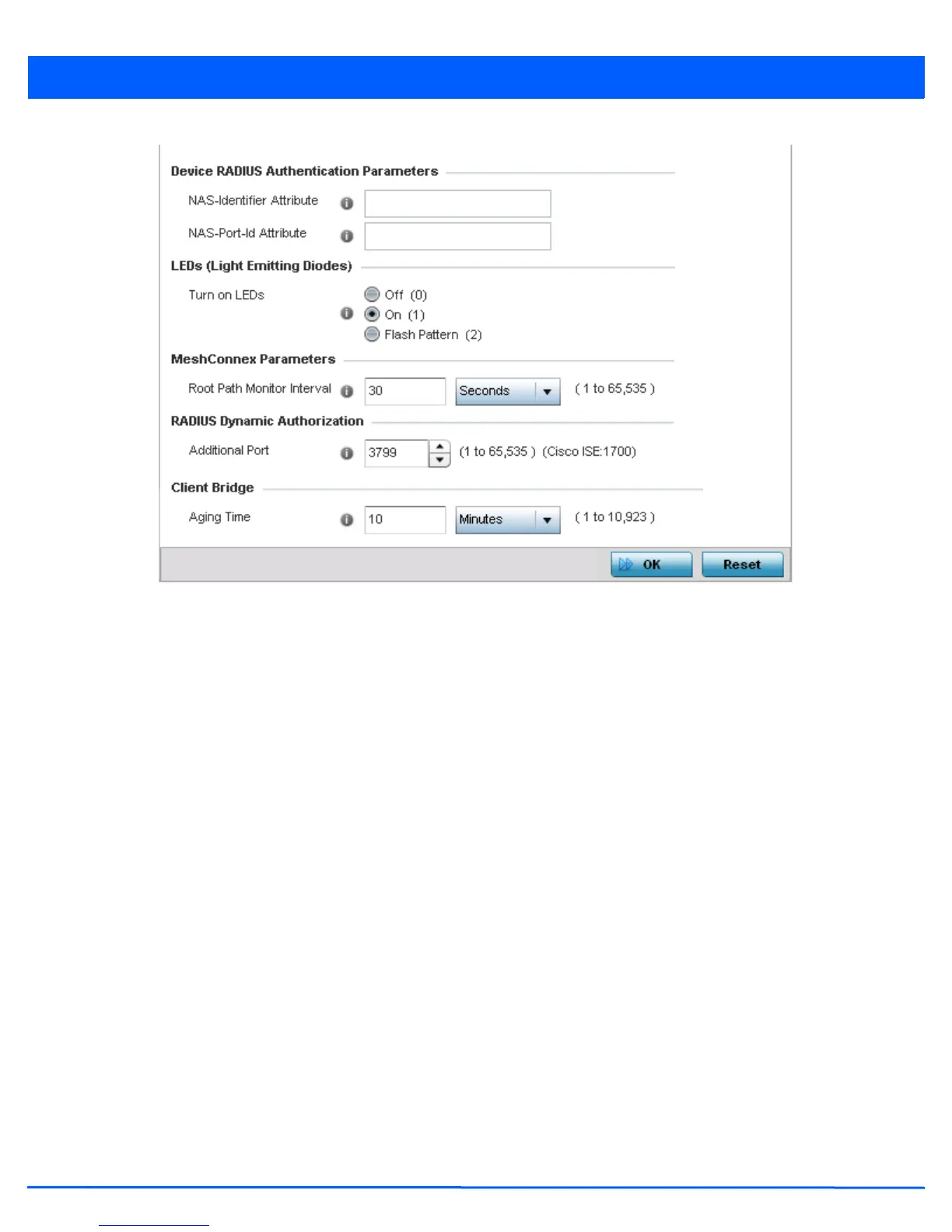Device Configuration 5 - 337
Figure 5-218 Device Overrides - Miscellaneous screen
31. Set a NAS-Identifier Attribute up to 253 characters in length. This is the RADIUS NAS-Identifier attribute that typically
identifies where a RADIUS message originates
32. Set a NAS-Port-Id Attribute up to 253 characters in length. This is the RADIUS NAS port ID attribute which identifies the
device port where a RADIUS message originates
33. Refer to the Turn on LEDs option to enable an adopted access point’s LEDs. This feature is enabled by default.
34. Select the Flash Pattern radio button to enable the access point to blink in a manner different from its operational LED
behavior. Enabling this option allows an administrator to validate that the access point has received its configuration from
its managing controller during staging. In the staging process, the administrator adopts the access point to a staging
controller to get an initial configuration before the access point is deployed at its intended location. Once the access point
has received its initial configuration, its LED blinks in a unique pattern to indicate the initial configuration is complete.
35. Use the drop-down menu to configure the access point’s Meshpoint Behavior. This field configures the access point’s
mobility behavior. The default is External (fixed) and indicates that the mesh point is fixed. The value vehicle-mounted
indicates that the mesh point is mobile. This feature is only available on an AP7161 model access point.
36. Use the Root Path Monitor Interval to configure the interval to monitor path to the root node.
37. Set the Additional Port value for RADIUS Dynamic Authorization field. Set this value to 1700 to enable a CISCO
Identity Services Engine (ISE) Authentication, Authorization and Accounting (AAA) server, when deployed in the network,
to dynamically authenticate a client.
When a client requests access to the network, the CISCO ISE RADIUS server presents the client with a URL where the
device’s compliance to the networks security such as validity of anti-virus or anti-spyware software is checked for the
validity for their definition files (this checking is called posture). If the client device complies, then it is allowed access to
the network.
38. Set the Aging Time value for Client Bridge. Use the spinner control to set a value in days, hours, minutes and seconds.
39. Select OK to save the changes made to the profile’s Advanced Miscellaneous configuration. Select Reset to revert to the
last saved configuration.

